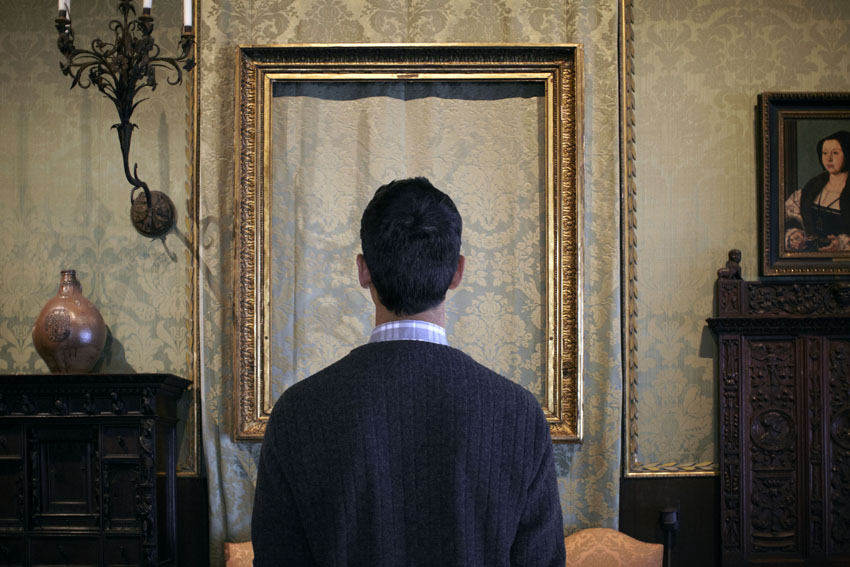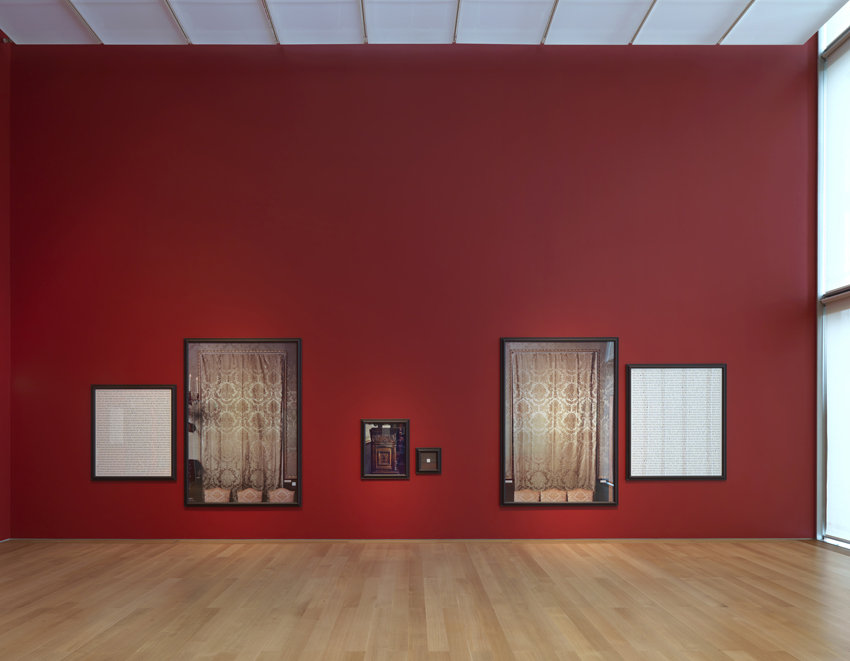Sophie Calle Exhibit Adds New Perspective to Gardner Museum Heist

Rembrandt, A Lady and Gentleman in Black in Sophe Calle’s “What Do You See?” (Photo Courtesy of The Isabella Stewart Gardner Museum)
In 1990, the Isabella Stewart Gardner Museum was the site of one of the most famous art heists of the 20th century. Twenty-three years later, the art is still missing (despite news this year that the FBI had identified the thieves). But in a new exhibit at the Gardner, French artist Sophie Calle is giving the paintings new life in the form of photographs and words. This will be the first time that “Last Seen”—a collection she worked on right after the heist—and “What Do You See?”—her new take on the theft—have been on view at the Gardner.
Back in 1990, Calle visited the Gardner Museum while an exhibition of her work was opening at the Institute of Contemporary Art. Just weeks later, the famous heist that rocked the museum occurred, leaving 13 empty wall spaces around the museum. After the works were stolen, Calle came up with the idea to create artwork that focused on the Gardner’s stolen works. She called up the museum and within a few weeks came to Boston to begin.
“We were in shock…[the heist] was a terrible situation,” says museum director Anne Hawley. “Sophie’s call, however, was like an angel to me… She was a light in all of the darkness.”
Calle’s light came in the form of her exhibit “Last Seen.” She started by standing in front of the newly barren walls at the Gardner and asking members of the museum’s staff to describe the stolen paintings. In the end, she produced a visual memory about the paintings’ absence by pairing the text of her interviews with photographs of the barren walls, where the multimillion-dollar paintings once hung.

Installation view of “Last Seen.” (Photo Courtesy of The Isabella Stewart Gardner Museum)
This year, the Gardner invited Calle back to the museum to revisit “Last Seen.” Something had changed since she was last at the museum: in 1995 the museum’s curator decided to repair and rehang four of the original frames that the thieves left. Today they clearly mark the former locations of the missing paintings. When Calle learned about the return of the frames, she became interested in the fact that an institution like the Gardner would decide to frame absence. From this, Calle came up with the idea for a new body of work titled “What Do You See?”, which makes its Gardner debut on Thursday along with “Last Seen.”
For “Last Seen,” Calle once again interviewed museum employees and also included museum visitors. This time she did not mention the missing paintings, instead questioning her subjects about what they saw when looking at the empty frames. “When I came back, some people didn’t even know what was supposed to be there,” Calle explained. Calle photographed the people standing in front of the empty frames, their responses written out next to the frame. For both “Last Seen…” and “What Do You See?” all of the statements that accompany each photo are left anonymous.
One of the most unique aspects of the new exhibit is that every person interviewed saw something different in the vacant space. Some saw nothing but a frame, while others could vividly see the painting as if it was still hanging on the wall in front of them.
Many of the quotes that Calle chose to use also seemed to have an emotional attachment to a painting. One person interviewed about Vermeer’s “The Concert” said, “I’ve never seen this picture in person, so I see crime-scene pictures. The frame lying on the floor, in the middle of the room, with broken glass contained within. The chalk they put around the body—that’s what this frame is to me. But it never goes away; you see the body every day”.
It is clear throughout both exhibits that the photographs and accompanying text rely on each other to add a third dimension to the mysterious story behind the Gardner thefts.
“The theft is like an open wound here,” says museum curator Pieranna Cavalchini. “Sophie has given the city and this museum a way to deal with it.”
Both “Last Seen” and “What Do You See?” will be shown for the fist time at the Isabella Stewart Gardner Museum starting Thursday, October 24, through March 3, 2014.


